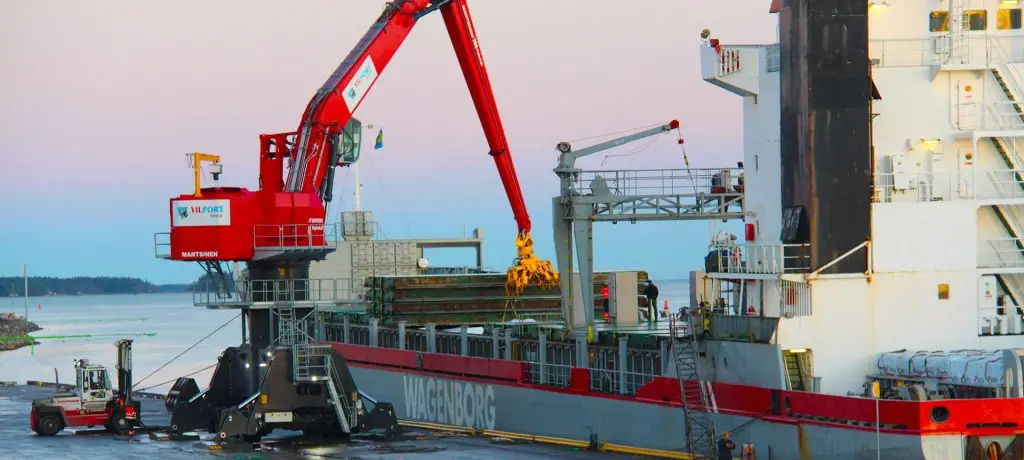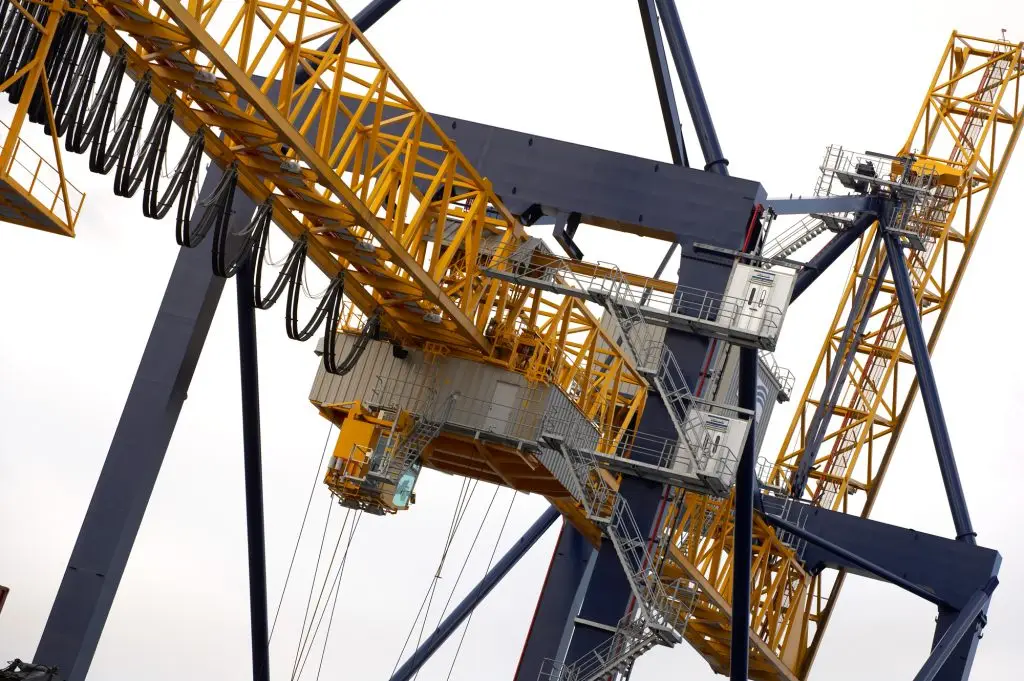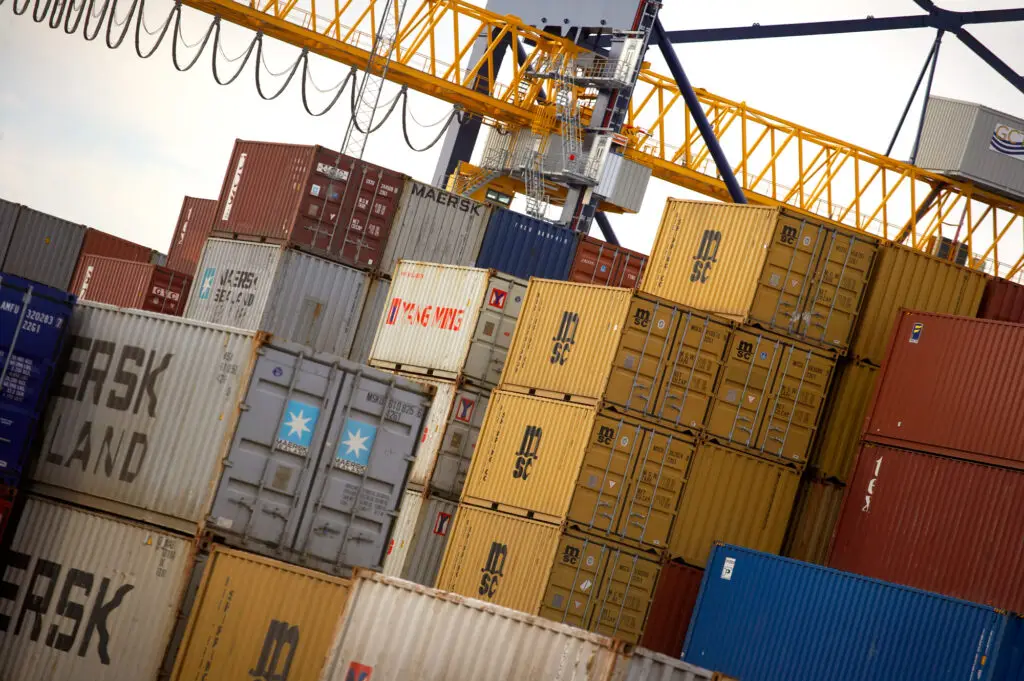Sustainability
Port of Gävle is developing and improving the possibilities for sustainable freight forwarding in Central Sweden.
Collaborative work
Port of Gävle is the largest logistics hub in northern Central Sweden. Exports from the region’s steel, wood and paper industries on their way around the globe meet input goods for industry, fuel, consumer goods and project loads that will be distributed throughout the country. A large number of stakeholders are active in the port area, and even more visit the port every day as part of the logistics solutions. A number of important freight corridors from the industrial centres in the region come together here.
As a logistics hub, Port of Gävle can contribute to the green transformation of society by acting as a barrier-lowering and enabling agent. An important part of this is to link the emerging fossil-free energy system with an existing logistics system, which is now beginning to change. In order to achieve this and meet the challenge of climate change, we need to work together.
Gävle Hamn AB is part of the 10-year program, Energy-optimised Port Cluster 2030, whose main goal is the Gävle port cluster eventually meeting the requirements in terms of CO2 reduction and energy efficiency at both national and county levels, which are in line with the Paris Agreement (the 1,5 degree target). The program permeates all of Gävle Hamn AB’s operations and is run in collaboration with the cluster port operators, who are invited to share initiatives and deliveries in a joint road map.
Sustainable infrastructure and cargo management

The port is growing sustainably
Port of Gävle has grown by 360,000 square metres with new quays, piers and processing areas over the past ten years. Environmental permits have been granted to triple the volume of goods. Major investments have been made in upgrading the harbour entrance channel, new warehouses, railways and other facilities. The goal has been that growth and development should be sustainable over the long term, both economically, environmentally, and socially. This involves systematically removing bottlenecks to improve energy efficiency and by enable the transfer of goods to sea and rail. This also means that growth must take place with no increased environmental impact and with future electrification as a guiding principle. And that the port area must be characterised by security and reliability for everyone doing business here or visiting the port.

Electrified railways to the terminals
Most of the terminals in Port of Gävle have direct access to the rail network, which enables climate-smart, sea-rail solutions. In 2021, the railway connection to the port will be electrified from Gävle’s freight yard, through an infrastructure investment by the Swedish Transport Agency in accordance with the current national plan. This allows the goods to be transported emission-free all the way out to the terminals.

Sustainable cargo handling
At Port of Gävle, many operators use electricity or fossil-free fuels to handle goods. The container terminal’s cranes are electrically powered, and the other machinery is powered by HVO (synthetic fossil-free diesel) or electricity. The bulk terminal also uses HVO in most of its machinery as well as several of the other terminals. The port cranes are gradually being converted to electrical cranes, and the port quays are being prepared to supply the ships with onshore electricity in the future. In addition, Gävle Hamn AB’s tugboat operations do not use fossil fuels with the help of HVO and with the boats connected to electricity at berth. Arriving ships receive up to a 30% discount on the port fees if the ships are rated with a good environmental index. Gävle Hamn AB’s goal is that all cargo handling within the port area should be completely fossil-free and that emission-free electrical connections should be available for cranes, work vehicles, arriving trucks, trains and ships.

Sustainable port procedures
An important area of focus for Gävle Hamn AB is providing efficient port processes that make calls smooth by minimizing waiting times and offering just-in-time arrivals and operations. To make this easier, we have developed a mobile application, the Port Activity App™ (which you can read more about under Traffic Information), which is a tool for sharing information between the port operators and enabling a joint view of the port call. Time-efficient calls also mean energy savings and thus make the transport chain more sustainable.

Fossil-free freight corridors
As the largest freight hub in Central Sweden, where several stable freight corridors converge, Gävle Hamn AB sees the possibility of lowering barrier for sustainbable freight transports. The goal is to have fossil free transports all the way from the industrial areas in Central Sweden to the port of Gävle and beyond – across the sea. This would relieve the burden on the railways and at the same time reduce the CO2 emissions from cargo trucks. The world’s first electric motorway for heavy vehicles has recently been tested on the E16 outside Gävle. The demonstration of the electric motorway is an example of how fossil-free freight corridors can be created. Another example is Gävle Hamn AB’s commitment to the development of a regional infrastructure for hydrogen. A third example is the planned ‘green tank zone’ in the port, where lorries are offered different fossil-free fuels.

Sustainable maritime transport
One horsepower can pull two tons on wheels on road, ten tons on rails and seventy tons on water – shipping is energy efficient. Shipping is the mode of transport that emits the least CO2 per ton-kilometre. A ship can handle a load equivalent to 500 trucks. The waterways are already ready and do not need to be built or maintained. And by shipping, cargo traffic is led away from the cities. Today, many long-haul road transports are taking place.
One reason for this is that truck hauling is relatively cheap. But sending thousands of trucks from Norrland to Europe with timber or steel has a far greater environmental impact than if the same cargo was sent via ship. Not to mention wear and congestion on the roads. Transporting goods by rail is an environmentally friendly alternative if electricity for the railways comes from fossil-free sources. However, the railways are already heavily burdened. In order to meet demand with increased freight transport by rail, major investments would have to be made in new railway tracks. The most energy efficient method is shipping. And the waterways already exist. They are ready to be used today – and they are not overloaded. However, the reason that this natural development is delayed is due to the fact that infrastructure for both roads and railways are largely tax-reduced, while shipping is forced to bear its own costs. Today, both roads and railways are largely tax-reduced infrastructure, while shipping is forced to bear its own costs. This needs to change in order to be able to contribute to safeguarding the environment. Competitive neutrality between the various modes of transport is a necessity.
The government’s maritime strategy states that ‘the transfer of goods from land to sea transport contributes to reducing both the overall environmental burden on the transportation sector and the problem of congestion on land.’ With stricter requirements for more environmentally friendly transport, Port of Gävle is ideally situated, only two hours from Stockholm. First-class road and rail connections without traffic congestion and bottlenecks, make it easy for cargo owners, not only in the region but in large parts of Sweden, to increase exports as well as imports via Port of Gävle.


